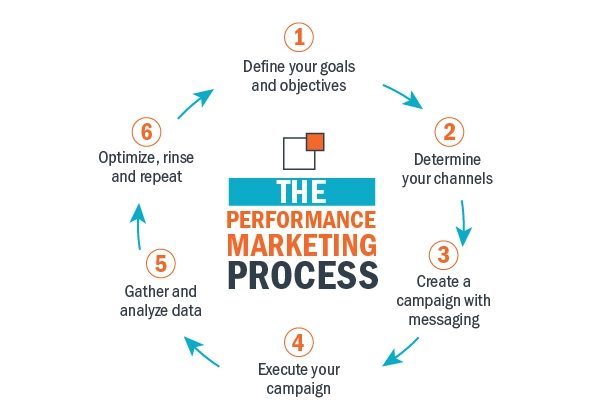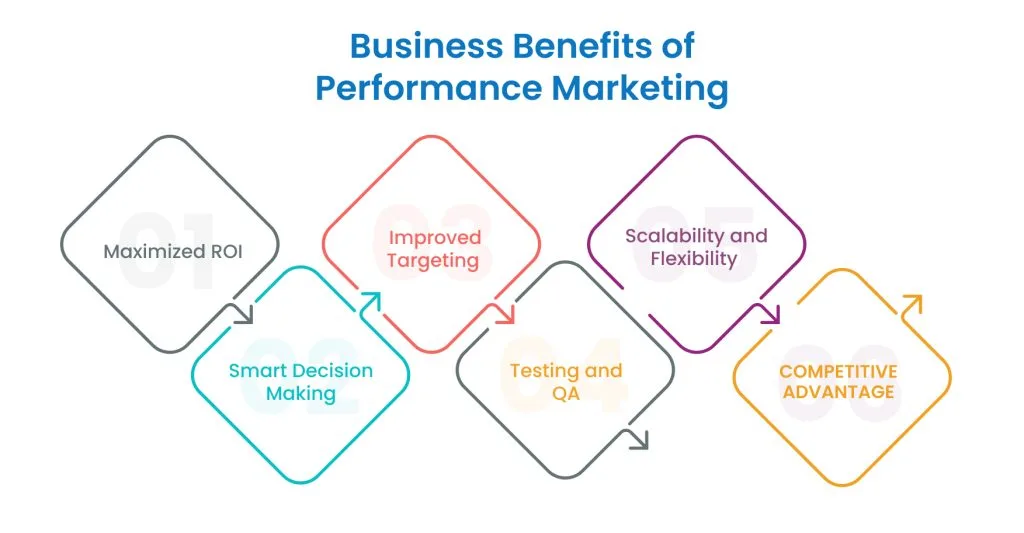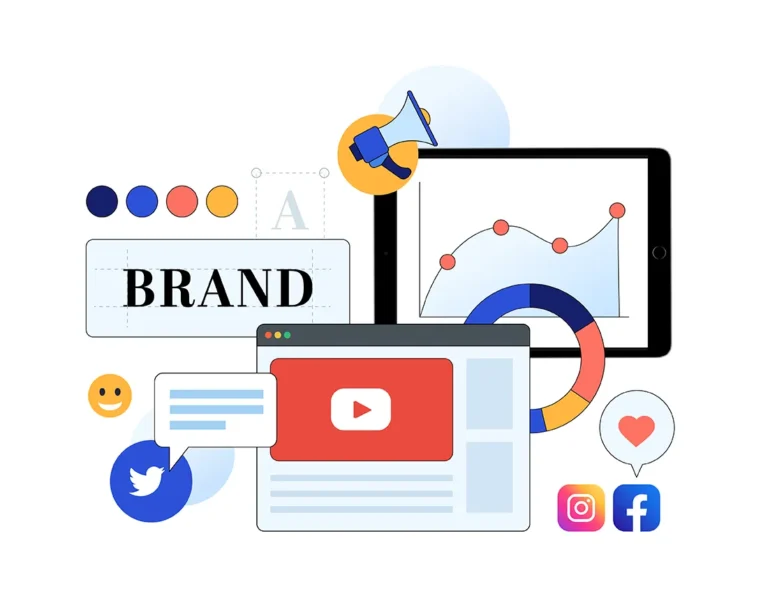What Is Performance Marketing?
Imagine launching an ad campaign where you only pay when someone clicks, signs up, or makes a purchase, instead of spending money on impressions that may not convert. That’s exactly how performance marketing works, making it a game-changer for businesses that want measurable results.
Unlike traditional advertising, which often involves upfront costs with no guarantee of success, performance marketing ensures every dollar spent contributes to a specific outcome. Whether through paid search, social media ads, or affiliate marketing, brands can fine-tune their strategies based on real-time data, maximizing their return on investment.

How Does Performance Marketing Work?
Performance marketing operates on a pay-for-performance model, meaning advertisers only pay when a user completes a desired action. This could be anything from clicking an ad to making a purchase. The core of this approach lies in data-driven decision-making, where businesses optimize campaigns based on real-time performance metrics.
Companies typically work with publishers, affiliates, and platforms that distribute ads across multiple channels. These ads are then tracked to measure conversions, engagement, and cost-effectiveness. Advanced tracking tools such as Google Analytics, Facebook Pixel, and third-party attribution software help marketers refine their strategies.
What are the Key Channels of Performance Marketing
Several digital channels contribute to a successful performance marketing strategy. Each channel serves a unique purpose and caters to different audience behaviors. Here are the details of them:
1. Paid Search Advertising
Paid search, or pay-per-click (PPC) advertising, involves bidding on keywords to display ads on search engines like Google and Bing. When users search for specific terms, the highest bidder’s ad appears at the top of the results. This method is effective for capturing high-intent traffic that is ready to convert.
2. Social Media Advertising
Platforms like Facebook, Instagram, LinkedIn, and TikTok allow advertisers to run highly targeted performance marketing campaigns. These ads leverage user data to ensure that they reach the right demographics, increasing the chances of engagement and conversions.
3. Affiliate Marketing
Affiliate marketing involves third-party partners (affiliates) promoting a brand’s products or services. Affiliates earn a commission for each successful referral, creating a win-win model where advertisers only pay for actual conversions. This strategy is particularly effective for e-commerce brands looking to expand their reach.
4. Native Advertising
Native ads seamlessly blend with website content, making them less intrusive and more engaging. These ads are typically found on news sites and blogs, appearing as recommended content. Native advertising improves user experience while driving clicks and conversions.
5. Display Advertising
Banner ads, pop-ups, and video ads fall under display advertising. These visual ads appear on websites, apps, and social media platforms. Retargeting campaigns are a common performance marketing tactic in display advertising, reminding users of products they previously viewed.
Why Businesses Prefer Performance Marketing
The pay-for-results model of performance marketing offers several advantages that make it highly appealing for brands.
- Cost Efficiency – Instead of spending money on ads with no guaranteed returns, businesses only pay for tangible outcomes.
- Scalability – Campaigns can be adjusted in real-time based on performance metrics, allowing marketers to scale efforts efficiently.
- Better ROI – Every dollar spent contributes to a measurable result, making it easier to optimize and maximize return on investment.
- Targeted Advertising – Performance marketing uses advanced targeting capabilities to ensure that ads reach the right audience segments.

What are the Best Practices for Running a Successful Performance Marketing Campaign
To make the most of performance marketing, businesses need to adopt data-driven strategies that improve conversions and efficiency:
Define Clear Goals
Before launching a campaign, businesses must set specific, measurable objectives. Whether the goal is to generate leads, increase sales, or drive website traffic, having a clear target ensures better optimization.
Optimize Landing Pages
A well-structured landing page plays a significant role in converting visitors into customers. Marketers should ensure that pages are fast-loading, mobile-friendly, and have compelling CTAs (calls to action).
Leverage A/B Testing
Testing different versions of ads, headlines, and CTAs helps marketers determine which elements drive the best results. A/B testing allows continuous improvement of campaigns.
Use Advanced Analytics
Tracking tools like Google Analytics, Facebook Ads Manager, and third-party conversion tracking software provide insights into user behavior. Businesses should analyze these data points to refine targeting, improve ad creatives, and enhance conversion rates.
Focus on Retargeting
Retargeting helps businesses reconnect with users who previously engaged with their ads but didn’t convert. This strategy significantly increases the chances of turning prospects into paying customers.
What are the Common Challenges in Performance Marketing
While performance marketing is highly effective, brands often face several challenges that require strategic solutions. Here are some of them:
Ad Fraud
Fraudulent clicks and bot traffic can drain marketing budgets. Using fraud detection tools and working with reputable advertising platforms help minimize these risks.
High Competition
Bidding wars in PPC and social media advertising can drive up costs. Marketers should focus on long-tail keywords and audience segmentation to stay competitive.
Attribution Issues
Understanding which marketing channels contribute to conversions can be challenging. Implementing multi-touch attribution models ensures businesses track the entire customer journey.
What are the Future Trends in Performance Marketing
The digital environment is constantly evolving, and performance marketing is no exception. Artificial intelligence (AI), automation, and privacy regulations are shaping the future of the industry.
- AI-Powered Optimization – Machine learning algorithms are improving ad targeting, bidding strategies, and audience segmentation.
- Privacy-First Advertising – With stricter data privacy laws, marketers are shifting toward first-party data strategies to maintain effective targeting.
- Voice Search and Visual Search – As search behavior evolves, brands are optimizing for voice and image-based queries to reach more users.
Final Thoughts
In a world where every marketing dollar counts, performance marketing stands out as the ultimate results-driven approach. By leveraging PPC, social media ads, affiliate marketing, and retargeting, businesses can eliminate wasteful spending and focus entirely on measurable success.
This model doesn’t rely on guesswork, it’s built on real-time data, precise audience targeting, and continuous optimization to drive maximum ROI.






